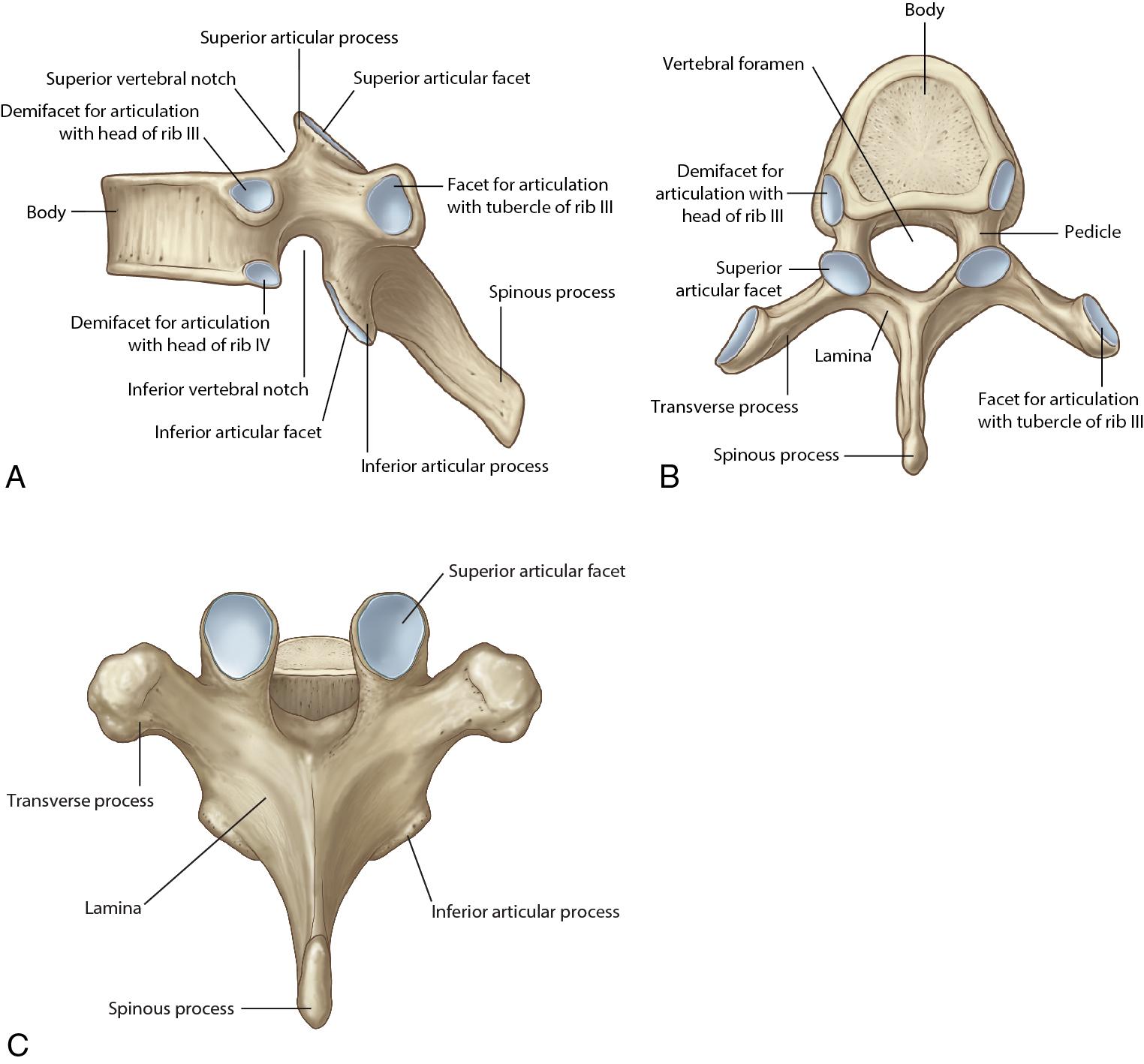Physical Address
304 North Cardinal St.
Dorchester Center, MA 02124
T1 and T10 through T12 possess unique anatomic features due to their transitional location between the cervicothoracic and thoracolumbar spinal regions, respectively. Thoracic vertebra two through nine are termed typical thoracic vertebra because they share common structural features ( Fig. 2.1 ):
Vertebral body: Heart shaped in cross-section. Posterior vertebral height exceeds anterior vertebral height, resulting in a wedged shape of the vertebral body when viewed in the lateral plane. This wedge shape contributes to the kyphotic alignment in the thoracic region.
Costovertebral articulations: The lateral surface of the vertebral body has both superior and inferior facets for articulation with adjacent ribs.
Costotransverse articulation: Rib articulation with the transverse process of vertebra.
Vertebral arch : Formed by laminae and two pedicles, which support seven processes:
Spinous process (1)
Transverse processes (2)
Superior articular processes (2)
Inferior articular processes (2)

T1 vertebral body dimensions resemble a cervical vertebra more closely than a typical thoracic vertebra. The T1 vertebral body possesses a well-developed superior vertebral notch. The T1 spinous process is very prominent and may be larger than the C7 spinous process. The first rib articulates with the T1 vertebral body via a costal facet.
Lack of costotransverse articulations (T11 and T12)
Ribs articulate with vertebral bodies and do not overlie the disc space
Vertebral body dimensions increase and approximate lumbar vertebral dimensions
Facet morphology transitions from thoracic to lumbar in function and appearance
T12 transverse process consists of three separate projections
The first rib attaches to the T1 vertebral body. The second rib attaches to the T2 vertebral body. The third rib articulates with both the second and third vertebral bodies and overlies the T2–T3 disc space. This latter pattern continues until the tenth vertebral body. The tenth, eleventh, and twelfth ribs articulate only with the vertebral body of the same number and do not overlie a disc space.
The paired pedicles arise from the posterior-superior aspect of the vertebral bodies. The superior-inferior pedicle diameter is consistently larger than the medial-lateral pedicle diameter. Pedicle widths are narrowest at the T4–T6 levels, with medial-lateral pedicle diameter increasing both above (T1–T3) and below this region. The medial pedicle wall is two to three times thicker than the lateral pedicle wall across all levels of the thoracic spine. The medial angulation of the pedicle axis decreases from T1 to T12. The site for entry into the thoracic pedicle from a posterior spinal approach is located in the region where the facet joint and transverse process intersect and varies slightly, depending on the specific thoracic level.
Become a Clinical Tree membership for Full access and enjoy Unlimited articles
If you are a member. Log in here